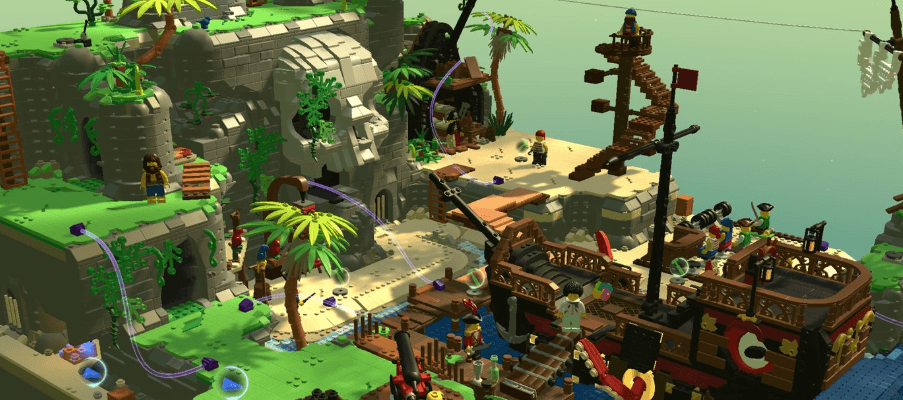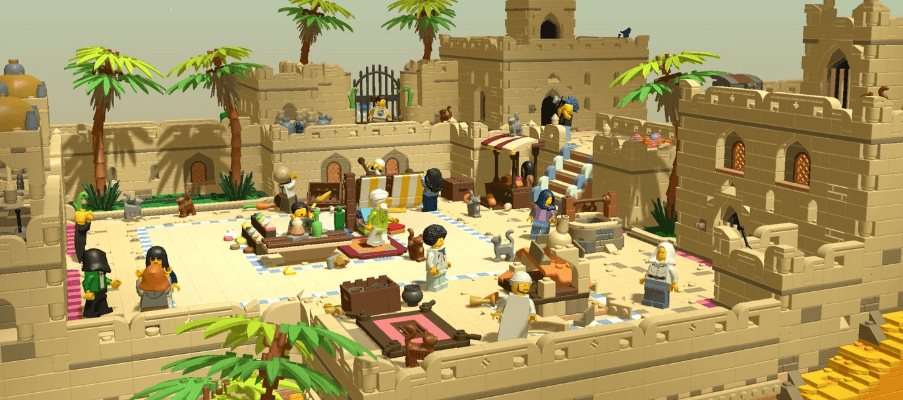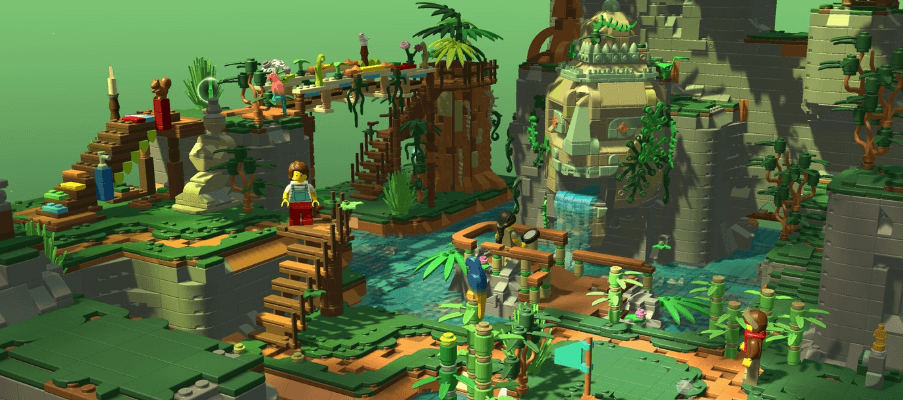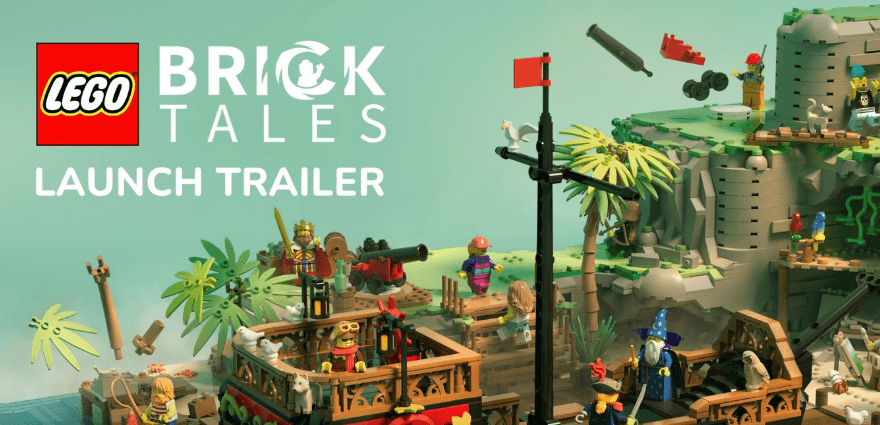LEGO has transcended its plastic roots, evolving from living-room floor creations to interstellar gaming sagas and even life-sized, drivable F1 cars—like the 400,000-brick marvels at the 2025 Miami Grand Prix. Now, Bricktales VR merges tactile creativity with immersive technology, inviting players to solve puzzles and rebuild worlds in a dimension where physics bends to imagination. Why settle for static models when your builds can unlock adventures?
Bridging Bricks and Bytes in a Virtual Playground
This isn’t just another sandbox. While LEGO games like The Skywalker Saga (free on Epic Games this May) digitize familiar stories, Bricktales VR redefines interactivity. Imagine constructing a lunar rover inspired by Lunar Outpost’s real-world designs—then piloting it across alien terrain. Or repairing a crumbling theme park ride with logic-driven brickwork, echoing the problem-solving behind LEGO’s 22,000-hour F1 engineering feats. Here, every click of a brick matters.

For fans of UCS sets like the Razor Crest (25% off for May the 4th), VR offers limitless scale without shelf constraints. But it’s also a gateway for newcomers: no lost pieces, no sore feet. Could this be LEGO’s boldest leap yet—reviving wonder through pixels and puzzles? The adventure starts where your creativity does.
Mechanics and Mastery: Where Physics Meets Fantasy
Bricktales VR’s core innovation lies in its hybrid physics engine—a system that rewards structural logic while allowing for whimsical experimentation. Unlike traditional LEGO games where pre-designed models snap into place, here, stability matters. Build a bridge too narrow? It collapses under your avatar’s weight. Forget cross-bracing on a rollercoaster? The carts derail. This mirrors real-world engineering principles seen in LEGO’s 1:1 F1 cars, where 22,000 hours of design ensured drivable stability despite their 400,000-brick construction. Yet the game balances realism with creative freedom: players can defy gravity using “imagination boosts” unlocked by solving environmental puzzles, like rerouting water flows to power makeshift turbines.

The puzzle design also borrows from Lunar Outpost’s collaborative rover project. One mission tasks you with assembling a moon vehicle using modular components—solar panels, drill arms, storage bays—each affecting performance. Choose bulky treads for rocky terrain or lightweight wheels for speed, echoing Lunar Outpost’s real-world权衡 between durability and efficiency. Miss the 25% UCS Razor Crest discount? Here, you’ll rebuild its Mandalorian-era counterpart from scattered wreckage, testing your knowledge of load-bearing joints and concealed weapon bays.
Beyond Sandboxes: The VR Advantage
While The Skywalker Saga (free on Epic Games until May 5th) offers vast worlds, its gameplay remains button-mashing combat and linear storytelling. Bricktales VR flips the script: you don’t play as a character—you are the builder. Using hand-tracking, you rotate, snap, and test creations in real time. Need a staircase? Grab bricks from a floating palette and layer them diagonally, watching stress points highlight in red if angles strain stability. It’s LEGO Technic meets CAD software, with the tactile joy of physical bricks preserved through haptic gloves that simulate texture and weight.
This approach eliminates the “detached” feel of flat-screen building games. In one story mission, you reconstruct a crumbling observatory dome while balancing on a scaffold 50 meters high—vertigo included. The F1 team’s challenge of making brick cars driveable at 30 mph finds its parallel here: every build must function, not just exist. Fail a puzzle? The game suggests alternatives (e.g., triangular supports over rectangular ones) but never solves it for you—a nod to LEGO’s ethos of iterative learning.
Hidden Depths: Easter Eggs and Real-World Synergy
Sharp-eyed players will spot nods to LEGO’s partnerships. The Lunar Outpost rover mission includes a QR code linking to the real rover’s specs, while a Miami GP-themed level lets you race mini LEGO F1 cars through a pit lane modeled after the 2025 event. Even the UCS Razor Crest appears as a crashed ship in a desert biome—salvage its parts to unlock blueprints for hidden weapons.

But the boldest crossover is educational. Completing certain puzzles unlocks behind-the-scenes videos: watch LEGO engineers discuss how they scaled down F1 suspension systems using Technic pins, or hear Lunar Outpost’s team explain regolith mining. It’s stealth STEM—teaching physics and robotics without lectures. Why build a bridge? Because tomorrow, you might design one for Mars.
Conclusion: From Virtual Mastery to Real-World Innovation
Bricktales VR isn’t just a game—it’s a training ground for tomorrow’s problem-solvers. By blending LEGO’s physical engineering ethos (like the 22,000-hour F1 car project) with VR’s limitless experimentation, it teaches players to think like builders, not just gamers. Want proof? The same cross-bracing techniques that stabilize your virtual rollercoaster mirror the Technic pin systems in LEGO’s real-world lunar rover collab with Lunar Outpost (launching August 2025).
Take action: Use the game’s QR code Easter eggs to explore real-world parallels. After assembling a moon rover in-game, dive into Lunar Outpost’s rover specs—their real mining bot uses similar modular design principles. Missed the Razor Crest discount? Apply load-bearing strategies from rebuilding it in VR to tackle complex UCS sets offline. And remember: LEGO’s Miami GP F1 cars proved bricks can handle 30 mph speeds—so test your virtual builds with similar audacity.
This is play with purpose. Like LEGO engineers who turned 400,000 bricks into drivable cars, your VR creations could inspire real-world prototypes. Start small: optimize a bridge design here, and maybe someday, you’ll engineer one for Mars. The bricks are just the beginning.

